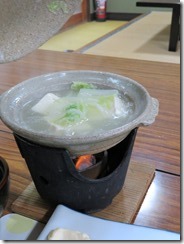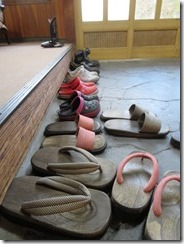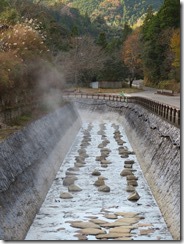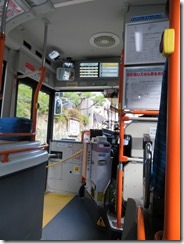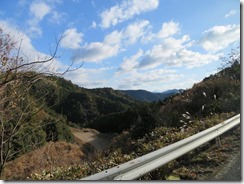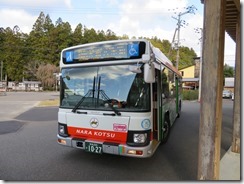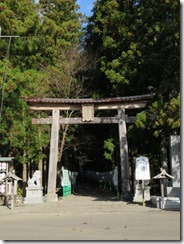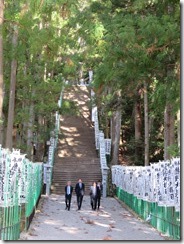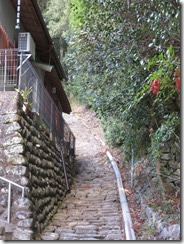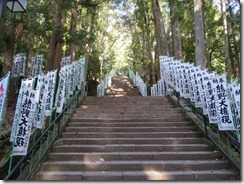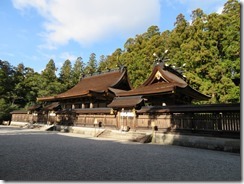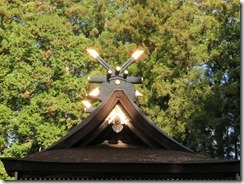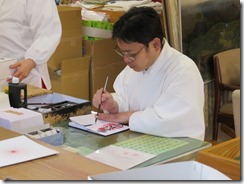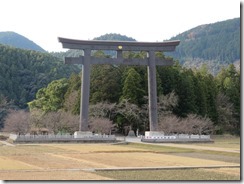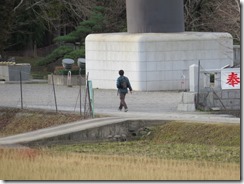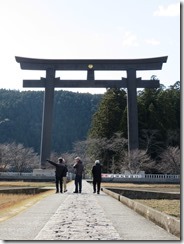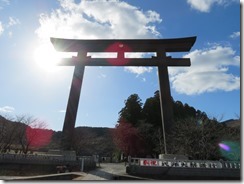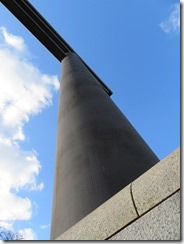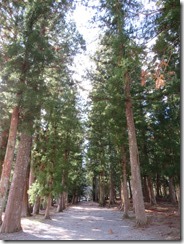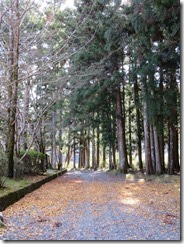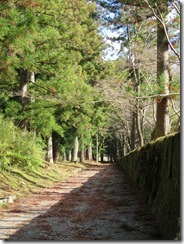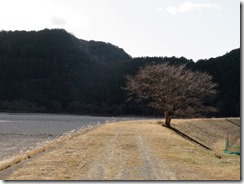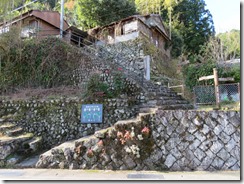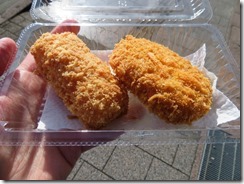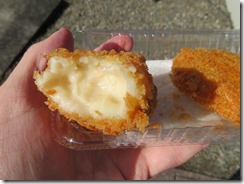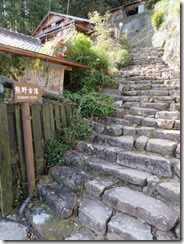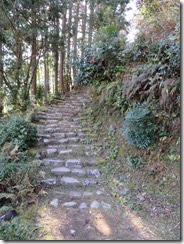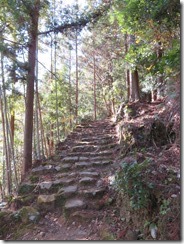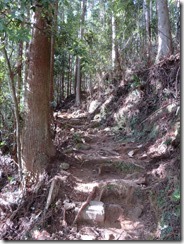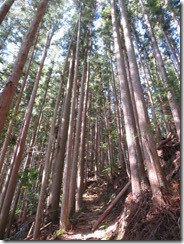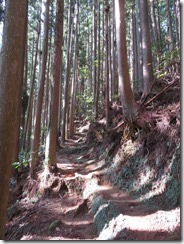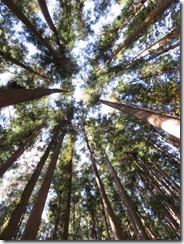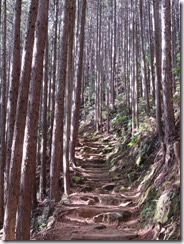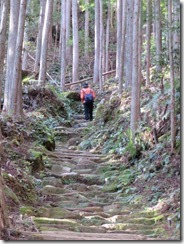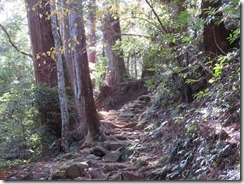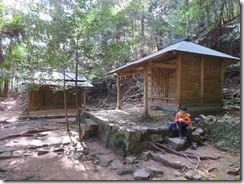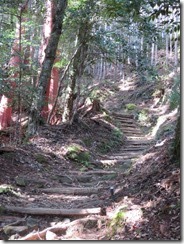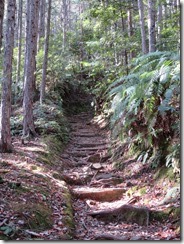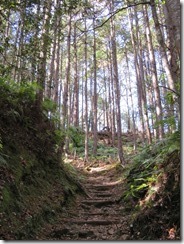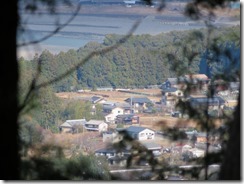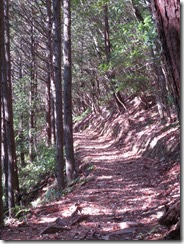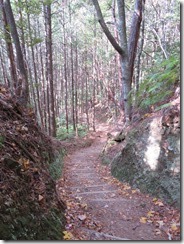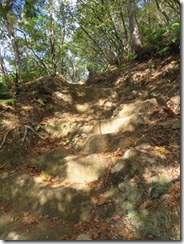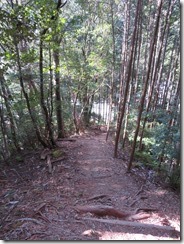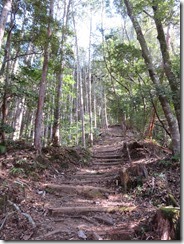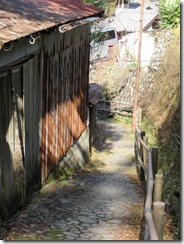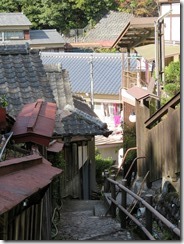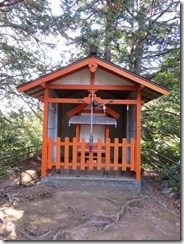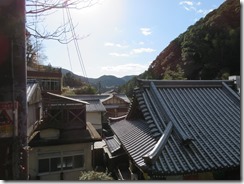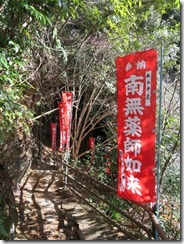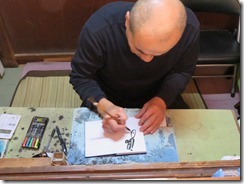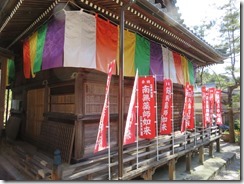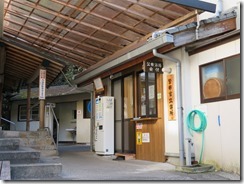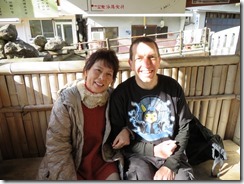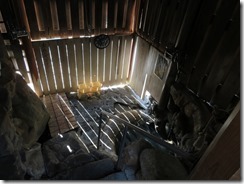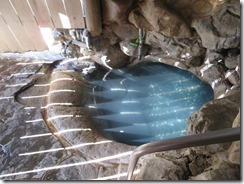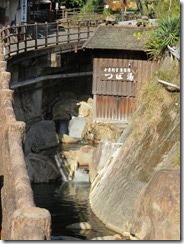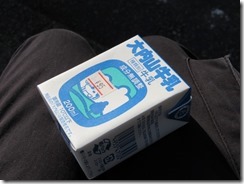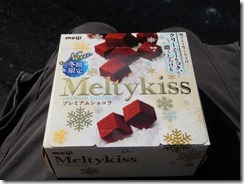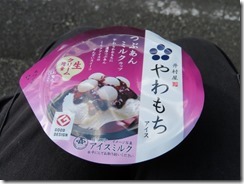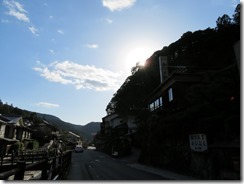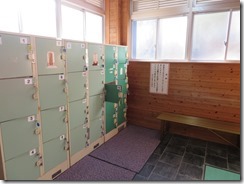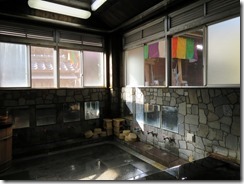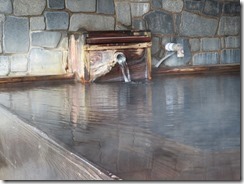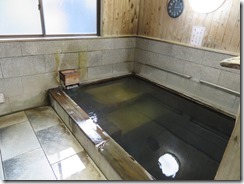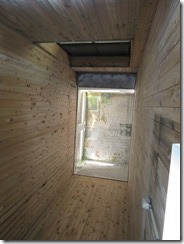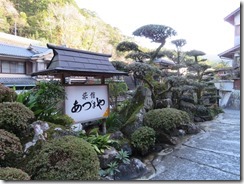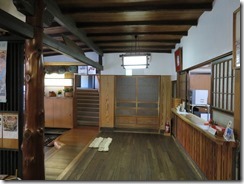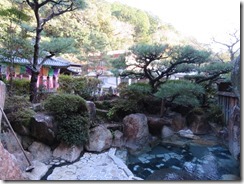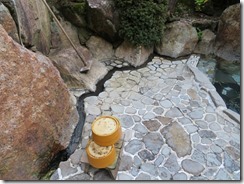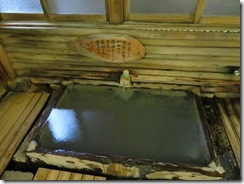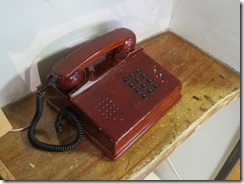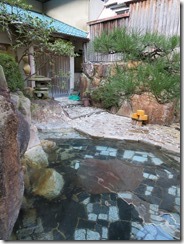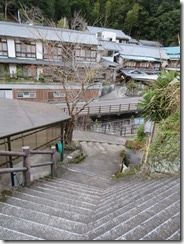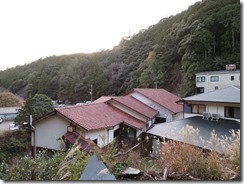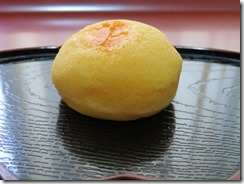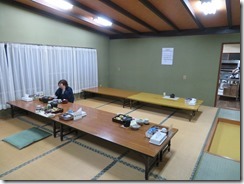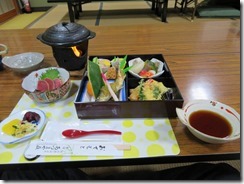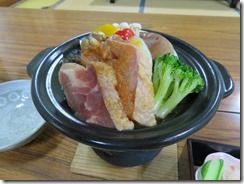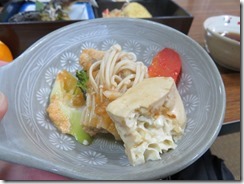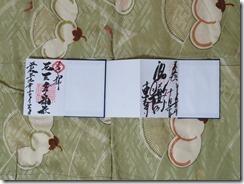It’s tradition in Shinto shrines to give five-yen coins in offering. The reason for this is that “five yen” in Japanese is “go-en” (yes, Japanese for “yen” is “en” – the reason we say “yen” is due to a combination of Portuguese-speaking Portuguese missionaries and inobservant English missionaries). “Go-en” is also a homophone for a polite word meaning “relationship”. So in other words, by giving five yen, you’re strengthening your relationship with the shrine’s deity.
Sadly, I did not sleep overly well last night. Most of the pillows I’ve slept on here in Japan have been like sleeping on a bean bag – not terrible, but a bit flat, and tend to move around. The pillow here is like sleeping on a bag of rocks. Also, the light in the carpark shines through my curtains.
Today was my day of rest. See, my plan was to go all-out every day, then have a day of rest in the middle – my original itinerary had my stay here in Yunomine immediately after Yamagata, which put it bang in the centre of my trip. However, as per the bus timing issues I mentioned in yesterday’s post, it actually turned out to be easier to get here from Kyoto than from the direction of Tokyo – plus, even if I did do the shorter route, it’d be a ten-hour slog from Yamagata. So I wound up switching Yunomine with Kyoto, putting my rest day firmly in the back half of my trip. Oh well.
But first, I still had a spot of sightseeing to do while I was here. But first first, breakfast. I asked for breakfast at eight today, and it was pretty good. No whole fish this time… well, except for that little dish at the back right corner of the rectangular plate, which is full of teeny tiny little white fish. The one at the front-left corner of the plate has the appearance and texture of a damp sponge – as in, a kitchen sponge – which was a little bit disturbing, but I asked the guy afterwards what it was, and I’m fairly sure he said freeze-dried tofu. Still suspect it may have been a sponge. Main dish was yudofu.
Right after breakfast, I was off on the bus again. In the early morning cool, I could see the river steaming. Different bus company this time – three different companies stop in Yunomine. Yesterday I arrived by Ryujin Bus, today I caught Nara Kotsu. Tomorrow I’ll be catching the third company, Kumano Kotsu, but now I’m getting ahead of myself. The fourth bus company in the area, Meiko Bus, doesn’t stop here, which is a shame, because it looks like they’ve got the most comfortable buses.
Anyway, point is, Yunomine Onsen is located on the Kumano Kodo pilgrimage routes. The Kii Peninsula has been a sacred place since ancient times, with some of the earliest written texts correlating it with Yomi, the land of the dead in Japanese mythology. The Kumano Kodo routes are a network of walking paths crossing the peninsula. In particular, Yunomine is on the Nakahechi route, which runs from near Tanabe in the west to Shingu and Nachi in the east – in olden times, the Nakahechi route was particularly popular with imperial visitors from Kyoto).
The Kumano Kodo along with the Camino de Santiago in Spain are the only two pilgrimage routes in the world recognised as UNESCO World Heritage sites – in particular, the Kumano Kodo is listed as “Sacred Sites and Pilgrimage Routes in the Kii Mountain Range”. The two routes have a kind of sister-city relationship (or rather, a sister-road relationship) with each other, in view of their unique shared status, and you can get an official recognition as a “dual pilgrim” if you walk a specified amount of both routes.
But today, my bus basically took me over the mountain into the next valley, in which is located the Kumano Hongu Taisha. Kumano Hongu Taisha is the main grand shrine of the Kumano Kodo, the head of the Kumano Sanzan, the three primary Kumano shrines. Just as all roads lead to Rome, all Kumano Kodo routes lead to Kumano Hongu Taisha. Or to be more precise, to Oyunohara, a large sandbank on the Kumano River, the original location of Kumano Hongu Taisha – said to be the place where the Kumano gods first touched down to earth. After a major flood in the ninteenth century, the buildings were relocated to a nearby mountain.
Let me tell you, though, the resulting shrine is extremely pretty. Two long lines of flags flank a long staircase running up the mountain. It seems, by the way, that Kumano Hongu Taisha is celebrating the 2050th anniversary of its founding next year. One slightly wonders how they keep track over such an unimaginably long span of time.
After I finished admiring the shrine, I headed over to see Oyunohara. Marking the entrance is Otori, the world’s biggest tori gate. Constructed from steel in 2000 (so, not exactly ancient, per se), it’s 33.9 metres tall, and 42 metres wide. It took six months to make, and another six months to erect. So yeah, fairly impressive. Included is a photo of a person for scale.
Then I saw Oyunohara itself. I confess I bypassed most of it, because a tour group was blocking the entrance at the time, and I didn’t realise the significance. Whoops.
Anyway, I continued on my way, heading for my next activity: the Dainichi-goe section of the Nakahechi route. At a mere 2.2km long, it’s the shortest section of the route, but the point is, it’d take me back to Yunomine – it’s part of why I picked Yunomine to stay in specifically as opposed to a couple of other onsen towns in the area (or even one of the coastal cities, much easier to access). It travels over the top of Mount Dainichi, basically 250 metres straight up, and 190 metres back down again.
But on the way, I finally managed to pass a butcher’s selling fresh croquettes. Yes, butchers sell croquettes here. I was hoping to find one in the Nishiki Market back in Kyoto, but the best I could find was places selling various kinds of deep-fried tofu. I bought me some croquettes. Most tasty.
Then I started on the hike (after a brief delay to go back and pick up the glove I’d dropped outside the butcher). Think this was actually the most strenuous hike I’d done so far this trip – for the first time, I actually had to stop and take my puffy jacket off after having put it on earlier. Very very pretty, though – cedar trees everywhere. There was a shrine part way up which I later discovered is where they source the bark used to make the rooves of Kumano Hongu Taisha (the red trees in some of the photos are the ones they’ve peeled the bark off), and at the top there was a Jizo statue named Hanakake Jizo, or Broken-nosed Jizo (after a story of a builder who unjustly attacked his apprentice and broke his nose, but the Jizo took the broken nose upon himself).
After a long descent on the other side, I finally started seeing the rooves of Yunomine through the trees, eventually ariving back in the town. Just before reaching the town, I saw Yunimone-oji – “oji”, meaning “prince”, is the title for all of the Kumano subordinate shrines. It used to be located in Toko-ji temple within the town itself, but after a fire in 1903 it was relocated to just outside town. Toko-ji is still in the town, though, pretty much bang in the town centre, and its object of worship is the Buddha of healing and medicine – I visited it on my return to town. And all this was quite a long description for what took me about three hours. Now it was time for the relaxation to start.
I’m in an onsen town. How done one relax in an onsen town? Try all the onsen.
First thing, I needed to book a ticket for the Tsuboyu. This is a little bath in a little hut that’s right on the river, and it’s included in the Kumano Kodo’s UNESCO listing, making it the world’s only UNESCO-listed hot spring bath. Basically, it’s been part of the pilgrimage purification rites for a long time. In fact, it’s still used, especially during the spring festival in April, when fathers and sons purify themselves in the bath, before the fathers carry their sons on their shoulders all the way over the Dainichi-goe route, so the sons don’t touch the ground.
The procedure is you buy a ticket from the vending machine and hand it to the attendant, who gives you a number – you also get a nice card saying “this is to certify that you have bathed in our heritage onsen, Tsuboyu” (or at least, I did, in English – not sure if Japanese people get one too). When your number is up, you get half an hour in the Tsuboyu. You can’t pre-book, so I wanted to get into the queue. Turns out there wasn’t much of a queue – my number was up next. However, I needed some time to drop by my minshuku, dump all my hiking gear, grab my towel, and settle my accounts with the office while it was still open, so I swapped numbers with the Japanese couple who came to buy a ticket right after me. I got all my business done (also asked about towels – turns out what I took to be a washcloth is the towel) and headed to the Tsuboyu to find the couple were still sitting there waiting.
We chatted for a while, in Japanese. My brain seems to be a little fickle when it comes to my Japanese ability. I seem to be able to hold a conversation just fine, then someone will say something I don’t understand or don’t remember the meaning of, and my brain seems to go “just give up, you suck at Japanese”. Anyway, the wife wanted to take a photo with me, and then she insisted we swap numbers back, so I got to go in next.
It’s quite a nice little bath, in quite a nice little wooden hut. I’m pretty sure it’s actual river water flowing through, but not entirely certain – it was quite hot, either way. Two of the walls actually open up (you can probably google to see what that looks like) – I opened one partway to let some light in, only suddenly realising later that the scribbled kanji written on the wall said “please don’t open”. The Tsuboyu is supposed to heal “rheumatism, nervous disorders, skin diseases, diabetes, et cetera”, which seems an impressive list. Not having any of those, I wasn’t really able to put it to the test. (Fun fact, though taking camera into onsen is kinda frowned upon – cause of all the nekkid people, ya know – my camera, with the shoulder strap detached, is small enough to easily hide in a pocket, so I smuggled it in to all the baths I tried today).
After my bath in the Tsuboyu, I decided it was time to stop for lunch… but missed the two food places closing for the afternoon by mere minutes. Instead, I went to the town’s general store (not quite a convenience store) which remained open, and bought myself some snacks (especially since I expected dinner would be expansive) – a carton of milk (traditional to drink after a bath in Japan), a box of Meltykiss premium chocolate, and ice cream with red bean and mochi. I sat down in the sun to eat them and enjoy the warmth, but sadly the sun vanished behind a mountain a few minutes later.
My Tsuboyu ticket also gave me free entry to the town’s public bath and medicine bath, so tried those next, with a short break in between. Not sure what about the medicine bath made it medicinal, but I quite liked the light well overhead.
Next, the baths in Ryokan Adumaya. Although Minshuku Adumayaso (where I’m staying) was last on my list of preferences, an unexpected benefit of staying here is that I get free access to the largest, fanciest, and most expensive ryokan in town, since this minshuku is essentially a branch office. And the baths at Ryokan Adumaya were certainly large and fancy. There were three baths, one of them even a rotemburo, an outside bath. The men’s and women’s baths swap every day (the idea being so that everyone can try all the baths) – I tried to ask if both sides have a rotemburo, but I’m not sure I asked my question clearly, so his answer was inconclusive. Given the arrangement of things, though, it seems to me like there’s only one rotemburo, so I feel kinda lucky that I came today.
Whew. Six different baths in total. I had so many baths today that I’m probably 60% water. Downside of so many baths in a row is my towel was becoming less and less effective.
I had, during my planning stages, wanted to visit another nearby onsen town called Kawayu. Hot water wells up through the ground along the river – if you want to have a bath, they simply hand you a shovel and you dig one yourself. During the winter, they dig a massive one called Senninburo – “Thousand-person Bath” – for everyone to use at once. The town is also in fairly easy walking distance from Yunomine, or I could get the bus there and/or back. I realised, however (still during my planning stages) than I was basically planning to spend my rest day travelling around like usual, so I decided not to visit Kawayu after all. Maybe another time.
And those paragraphs described the next three hours of my day, bringing me to sunset. I returned to my minshuku to start blogging and watch children’s television until dinner. Today’s snack was another mikan cake. Think mikan are a local speciality. Was kind of interested about a segment in one show teaching kids how to blow their noses with tissues – thought that was seen here as being kinda icky. Or maybe it’s just the western practice of blowing your nose on a tissue, then sticking it up your sleeve for later use.
Dinner was, again, an impressive spread. Actual tempura this time (think what I called tempura last night was something else), beef tataki, a slightly different nabe, the same whole fish and chawanmushi.
Headed back to my room after dinner to watch VS Arashi. They’ve overhauled all their games, so it took me a little while to recognise it. Watching in Japanese is quite different English.
Time to pack and head for bed – I’m returning to Tokyo tomorrow, but I want to get some sightseeing done in this area first. In order to do that, I need to catch literally the very first bus out of town, at 6:55am, so breakfast will be at 6.
Today’s photo count: Seven hundred and fifty-two.
Today’s pedometer count: 9786 steps, for 7km.
Today’s goshuin count: Two, from the left this time, Kumano Hongu Taisha and Toko-ji. Also finished off the first “side” of my shuincho, which is why the funny arrangement in the photo – had to open it in such a way as to show the last page of the front side and the first page of the back. Also, the miko who took the payment for the goshuin in Hongu Taisha also handed me what’s essentially an English tract for Shintoism. Dunno if it’s because I looked like a nonbeliever, or just because I was foreign.
Today’s stamp count: Two, Kumano Hongu Taisha and Yunomine-oji. Turns out there’s a whole lot of stamp stations along the Kumano Kodo, which are all marked on the map I picked up in the visitor information centre back in Tanabe. Unfortunately, there was also one in Oyunohara which I failed to spot, and didn’t realise until later.


